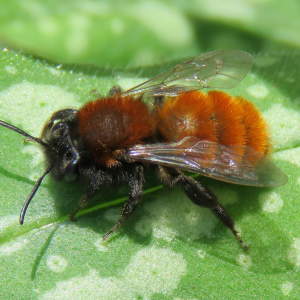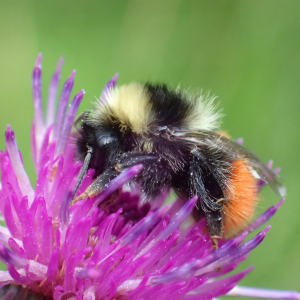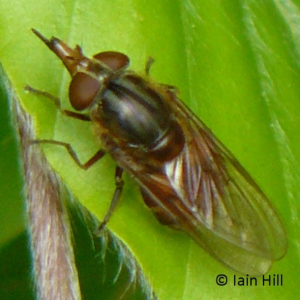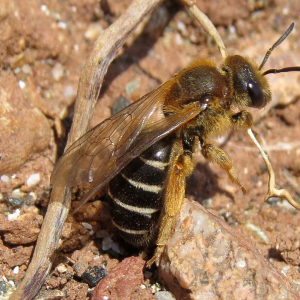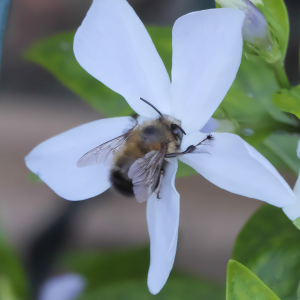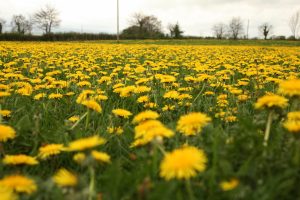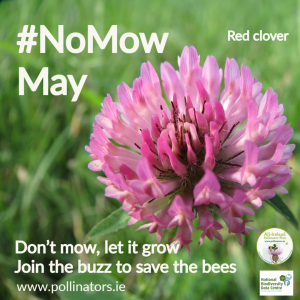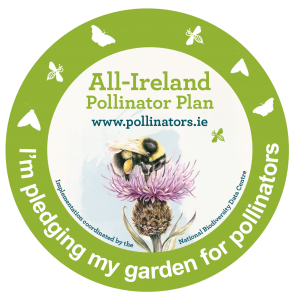Pollinators in April
Which pollinators are active this month? What plants are they visiting? And what can you do to help them? Here’s everything you need to know about pollinators in April.
Which pollinators can I spot in April?
On the island of Ireland, 20% of our wild bees are bumblebees, and 80% are solitary bees. We also have 180 hoverflies. One third of our wild bee species in Ireland is under threat of extinction. This is mainly because we have drastically reduced the habitat that provides them with food and shelter. In April, Dandelions are at their peak of blooming. In 2023, records from the National Biodiversity Data Centre showed that Dandelions were the number one favourite food for Ireland’s wild bees. These often-overlooked plants are starting to flower now. Let them bloom to feed our hungry pollinators.
If you spot any of these species, submit your sightings to the National Biodiversity Data Centre. You can attach a photo if you’re not sure if your identification is correct.
Which native plants are growing in April?
Native plants provide the best source of food for our pollinators as they have evolved together. Keep an eye out for some of these species in April.
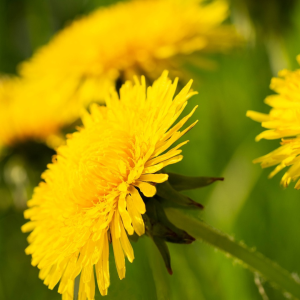 |
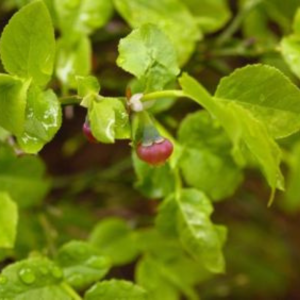 |
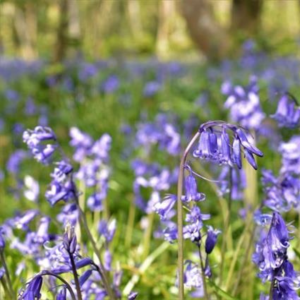 |
 |
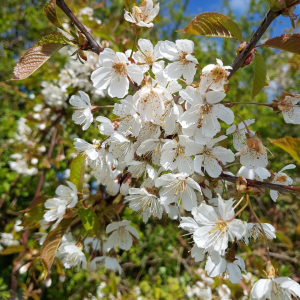 |
|
Dandelion (Taraxacum agg.) |
Bilberry (Zoë Devlin) (Vaccinium myrtillus) |
Bluebell (Oisín Duffy) (Hyacinthoides non-scripta) |
Meadow Buttercup (Zoë Devlin) (Ranunculus acris) |
Wild Cherry (Prunus avium) |
Submit your sightings to the National Biodiversity Data Centre. You can attach a photo if you’re not sure if you have the correct identification.
A warning about wildflower seed mixes: Wildflower seed mixes can do more harm than good to biodiversity. They often result in colourful displays that are attractive to humans but are of little value to pollinators. Many contain non-native species and can inadvertently introduce invasive species. Please avoid using them where possible. The best way to encourage native wildflowers is by reducing mowing.
How can I help pollinators in April?
1. Let Dandelions Bee
April sees the biggest bloom of Dandelions. These native wildflowers are an important source of nectar and pollen. Records sent to the National Biodiversity Data Centre in 2023 showed that Dandelions were the most popular food source for wild bees. Help feed hungry pollinators and ‘Let Dandelions Bee’.
2. Learn about upland pollinators
There are over a hundred different species of wild bee on the island of Ireland. All are adapted to different habitats. Some pollinators prefer upland bogs and heaths, like the Mountain Bumblebee. This bee was first recorded in the Dublin/Wicklow Mountains in 1974 and is spreading southwards. Help us track the spread of this bumblebee by sending in your sightings.
To observe pollinators, you need to slow down and find a sheltered sunny location, where upland plants are in flower such as Bilberry (April to July) or Heathers (Cross-leaved heath – May to September, Bell heather – July to September, Ling – July to October), then just keep your eyes peeled and your ears pinned.
Learn more about upland pollinators, plants, and how to spot them in this blog by our Farmland Officer:
3. Do a Flower-Insect-Timed Count on a patch of Dandelions
Become a citizen scientist and help us keep track of insect populations by doing a Flower-Insect-Timed (FIT) Count. Take a mindful 10 minutes, sit in front of a patch of Dandelions and count how many insects visit. Send us your results online or use our free FIT Count app.
4. Reduce mowing – get ready for No Mow May
Get ready for No Mow May. If you’re worried about grass growth, cut your lawn before the end of April. This will ensure the height is manageable when it’s time to mow again. Make sure you remove grass clippings to help wildflowers grow.
Reducing mowing even to once a month can help feed our hungry pollinators. By mowing less you can help restore pockets of species-rich grassland: a vital habitat providing food and shelter for pollinators. Species-rich grasslands have been decimated in Ireland in recent decades.
Download a free poster from the No Mow May homepage and encourage your neighbours and friends to join the buzz to save the bees.
If you want to go further and help pollinators across the summer, create a ‘short-flowering meadow’. By cutting just once a month you can help native wildflowers emerge and feed our hungry pollinators.
5. Pledge your garden for pollinators
‘Pledging your garden for pollinators’ means you have chosen to make it a healthy pitstop for pollinators in the landscape.
Add your garden to our online map ‘Actions for Pollinators’, join a network of pollinator-friendly spaces, and help us track our progress to create an Ireland where pollinators can survive and thrive.
Create an account here: Actions for Pollinators account registration
Find out more

